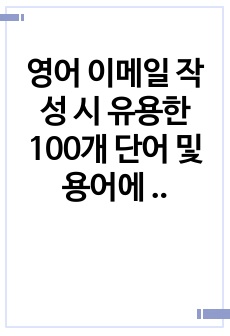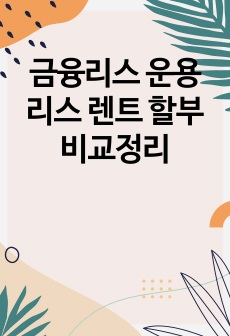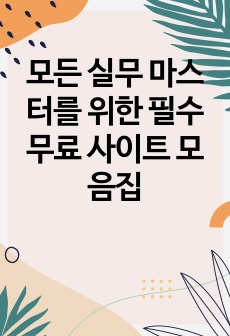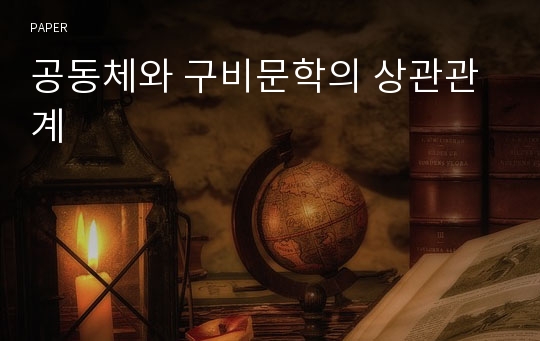* 본 문서는 배포용으로 복사 및 편집이 불가합니다.
서지정보
ㆍ발행기관 : 한국구비문학회
ㆍ수록지정보 : 구비문학연구
ㆍ저자명 : 서대석
ㆍ저자명 : 서대석
목차
1. 공동체론의 문제1.1. 공동체와 구비문학의 관계
1.2. 공동체의 범위
2. 공동체와 구비문학 갈래
2.1. 공동체와 신화
2.2. 공동체와 민요
2.3. 공동체와 설화
2.4. 공동체와 무가
3. 맺는말
한국어 초록
구비문학과 공동체의 관계를 연구하는 이유는 구비문학이 공동체의 특성을 반영하는 문학이기 때문이다. 그런데 최근의 논의는 실체가 분명하지 않은 사이버공동체나 동아시적 공동체 또는 지구촌공동체까지 언급되고 있다. 이러한 논의는 이들 공동체의 특성을 드러내는 구비문학 자료가 연구대상이 될 만큼 축적되어 있지도 않을뿐더러 자료의 채록도 충분히 이루어지지 않았기에 연구의 실효성이 없는 공허한 논의라고 생각한다. 구비문학연구의 실효를 거두기 위해서는 전통구비문학 자료가 전승되었던 촌락공동체의 연구부터 시작하여 고을단위의 지역공동체나 민족공동체까지의 범위를 넘지 않는 것이 필요하다고 본다.공동체와 구비문학의 관계에 대한 연구는 구비문학 장르에 따라서 다르게 접근될 수 있다. 신화는 신성성이 인지되는 공동체의 범위에 따라 씨족신화, 마을신화, 민족신화로 구별된다. 씨족신화는 씨족이라는 특정한 혈연집단인 공동체에서, 마을신화는 일정 지역을 점유한 마을 주민이라는 공동체에서, 그리고 민족신화는 민족공동체 차원에서 전승되는 신화이다. 이러한 신화는 공동체의 형성과 발전과정 그리고 공동체 구성원의 행위규범과 공동체의 안녕과 번영을 기원하는 내용을 담고 있다.
공동체의 성격을 가장 잘 드러내 주는 구비문학 갈래가 민요이다. 노동요 의식요등 기능요는 공동체 구성원이 일을 할 때나 의식을 행할 때 함께 불렀던 노래로서 마을 공동체 문화의 특성을 잘 드러낸다. 한국민요 중에서 대표적인 노동요는 <모심기노래>, <논매기노래>이고 대표적인 의식요는 <상여소리>와 <달고질소리>인데 이들은 모두 마을공동체에 구성된 ‘두레패’들이 부른 선후창으로 불려진 민요로서 공동체의 삶을 반영하고 있다.
영어 초록
The reason for this study of the relationship between oral literature and community is that oral literature is the literature that reflects the characteristics of the community. Recently, though, this discussion has dealt with substantially vague subjects such as the cyber community or the East Asian community, and even the global community. Not only are the oral literature materials that have been gathered insufficient to conduct research into these sorts of communities, but the recording of materials has still not been sufficiently carried out, so I believe that these discussions are ineffective and empty. In order to conduct effective oral literature research, we must begin by researching the village communities where traditional oral literature materials were transmitted, and it is necessary that we do not exceed the scope of county communities or the national community.Research on the relationship between community and oral literature may be approached differently depending on the genre of oral literature. Myths can be divided into clan myths, village myths, and national myths, according to the scope of the communities that recognize their sacred nature. Clan myths are those myths that are transmitted in the communities of specific kinship groups known as clans, village myths are those transmitted in the community of village residents who occupy a certain area, and national myths are those transmitted on the national community level. These myths deal with the formation and process of development of these communities, as well as the behavioral standards of members of the community and desires for the peace and prosperity of the community.
The oral literature genre that best expresses the character of a community is folk songs. Functional songs such as labor and ceremonial songs express the cultural characteristics of a village community, being songs that the members of this community sung together while working or performing ceremonies. In Korean folk songs, the representative labor songs are rice seedling transplanting songs and weeding songs, and the representative ceremonial songs are funeral bier songs and earth ramming songs (sung when preparing the ground for a house or grave site). As lead-and-refrain folk songs (where one person sings the lead and several reply with the refrain), sung by members of the community known as the “durepae” (a communal work force), they reflect the life of the community.
Tales are a genre that show class characteristics rather than the characteristics of a community in a specific area. The tales created in Joseon Dynasty society are of two distinct types: the tales of the learned literati class and the tales of the commoner class, who were excluded from the learned culture of classical Chinese (hanmun). In this regard, I believe it is desirable that the discussion of tales should take place on the level of the national community that is united by a common language.
Shaman songs have a dual nature, being both the literature of the shamanic community and the literature of regional communities. This is because shaman songs reflect the world view of the shamans, but at the same time they express prayers and desires for the peace and prosperity of the community in a specific area.
In addition to the shamanic community, we can also define the community literatures of groups of professional entertainers such as gisaeng and performers. Yet the oral literature of these professional performing groups is divided into that of the performers and the audience, so in this regard it is difficult to discover any characteristics as the literature of a small-scale community. In order to have significance as a true communal literature, the oral literature must be a literature where both performers and audience exist as one community, a literature that expresses the consciousness and world view of the community, and a literature marked by unity in the lives and literary production of the community.
참고 자료
없음"구비문학연구"의 다른 논문
 근대화 과정에서의 무속과 공동체문화32페이지
근대화 과정에서의 무속과 공동체문화32페이지 <조녹잇당신본풀이>의 전승 유형 연구 : 지역 유형과 광포 유형의 하위 유형 비교를 중심으로35페이지
<조녹잇당신본풀이>의 전승 유형 연구 : 지역 유형과 광포 유형의 하위 유형 비교를 중심으로35페이지 서울굿 무가 노랫가락의 양상과 기능32페이지
서울굿 무가 노랫가락의 양상과 기능32페이지 불교적 感應의 담론 형성에 관하여 : 힘의 역학관계를 중심으로28페이지
불교적 感應의 담론 형성에 관하여 : 힘의 역학관계를 중심으로28페이지 무속신화에 나타난 救藥모티프의 서사화 양상과 그 의미32페이지
무속신화에 나타난 救藥모티프의 서사화 양상과 그 의미32페이지 동아시아 농경 및 곡물기원 신화와 문화영웅의 존재양상52페이지
동아시아 농경 및 곡물기원 신화와 문화영웅의 존재양상52페이지 공민왕 몽진 설화에 나타난 주민들의 역사의식48페이지
공민왕 몽진 설화에 나타난 주민들의 역사의식48페이지 19~20세기 전반기 공동체의 변화와 판소리38페이지
19~20세기 전반기 공동체의 변화와 판소리38페이지 19세기 말, 20세기 초 잡가의 소통 환경과 존재양상 : 근대적 노래 공동체의 형성 과정을 중심으..31페이지
19세기 말, 20세기 초 잡가의 소통 환경과 존재양상 : 근대적 노래 공동체의 형성 과정을 중심으..31페이지 1900년대 전반기 방랑이야기꾼과 이야기문화48페이지
1900년대 전반기 방랑이야기꾼과 이야기문화48페이지



























